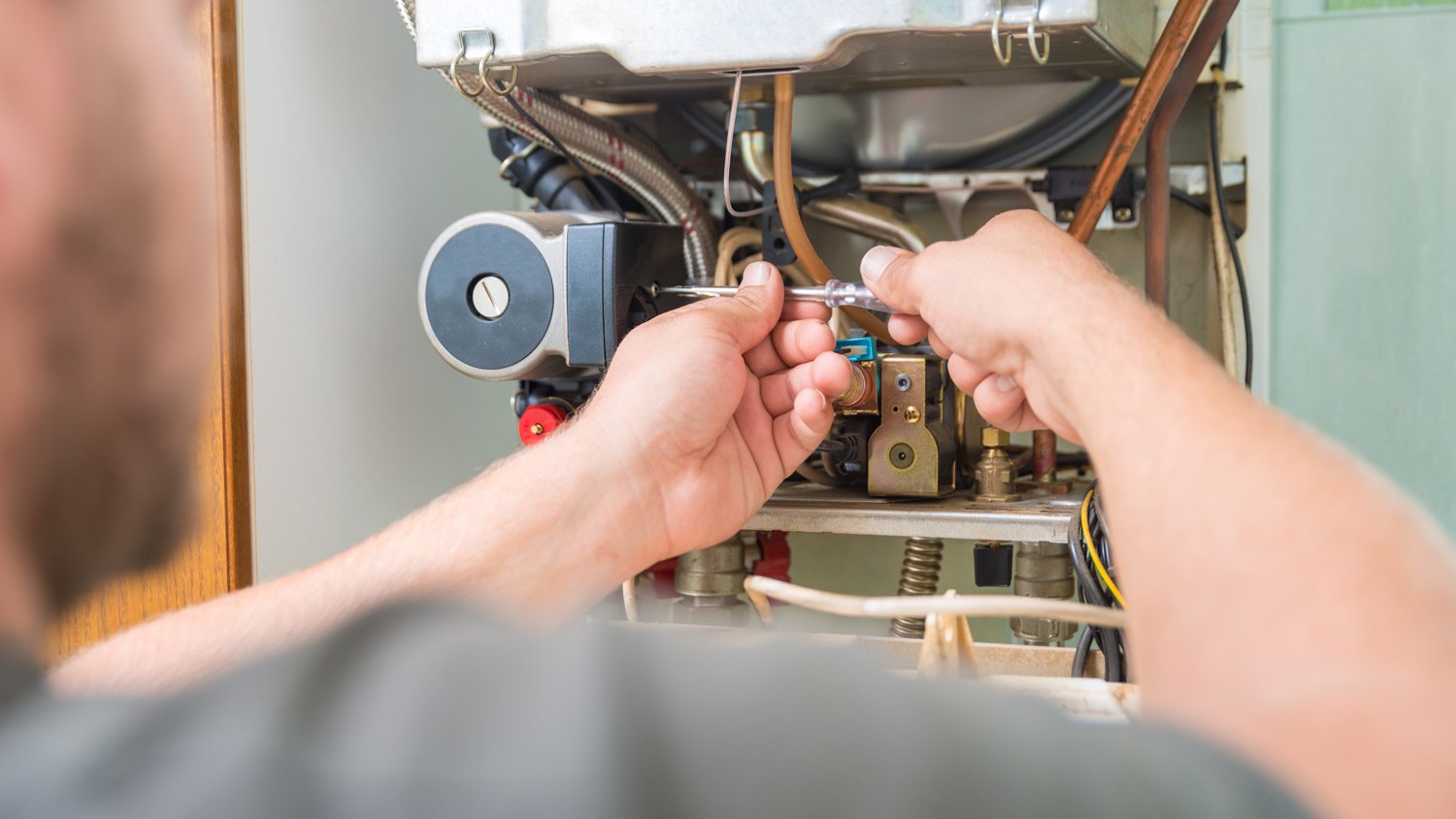5 Types of Gas Furnaces to Keep You Cozy at Home
There are five common gas furnace types to choose from, based on your needs


Having the right heating system in your home isn’t just a comfort—it’s a necessity, especially in colder parts of the country. When temperatures dip, staying warm means staying healthy and comfortable. If your furnace is about to give up the ghost, now might be a good time to consider a new system.
Here’s a look at five gas furnace types and their features.

1. Single-Stage Gas Furnace
This standard furnace is a one-trick pony. It only operates on a high fan speed. It’s not the most energy-efficient furnace, and it’s louder than other models. This type of furnace will only suffice in regions with mild winters.
2. Two-Stage Gas Furnace
The two-stage furnace is quieter than a single-stage furnace and has two fan speeds: high and low. The two-stage furnace has a longer running cycle, allowing the heat to distribute more evenly throughout the home.
3. Two-Stage Variable-Speed Gas Furnace
Even quieter than the previous two gas furnaces on the list, the variable speed furnace helps reduce energy consumption. This type of furnace works well in two or three-story homes.
4. Three-Stage Variable Speed Gas Furnace
This system allows for even more flexibility in home heating. This furnace will automatically switch between a slower and higher speed depending on the temperature outside and inside.
5. Modulating Variable Speed Gas Furnace
The modulating variable-speed gas furnace provides the best energy efficiency. The system operates by making slight adjustments to minimize temperature fluctuations. This type of furnace will help keep your home comfortable. If you live in a colder climate, it will help you save money.
Considerations When Choosing a Gas Furnace

Choosing the type of gas furnace that’s right for you is an important decision. On average, gas furnaces last between 15 and 20 years if they’re properly maintained. An annual furnace checkup will help it last even longer.
You’re making a long-term commitment to the furnace you choose, so taking some time to consider your options is essential.
The most common considerations when choosing a gas furnace include:
Cost
Size
Furnace features
Energy efficiency
If you live in a milder climate, a simple heating system may be enough to keep your home warm enough. Harsher climates require a sturdier system. While the cost of a new furnace can be a significant factor, investing in a quality heating system will ensure your home stays warm for years to come. And remember that you can’t install a gas furnace on your own. Always hire a local furnace installer to do the job for you.
"It's worth spending a bit more money up front to get an HVAC system that is really efficient and reliable. High-efficiency heating will save money over time and decrease your impact on the environment."
— Yashar Mosaferi, President of Klondike AC, British Columbia, Canada
Alternative Heating Options
If a gas furnace isn’t quite what you’re looking for, there are many alternative heating options. These options are great for additional heating sources or stand-alone heating.
Alternatives to gas furnaces include:
Electric furnace: Operates similar to a gas heater, but using electricity.
Gas pellet stoves: Uses wood pellets made from wood waste to heat rooms.
Heat pump: Heat pumps use electricity to move heat between locations.
Radiant heating: Heats a room through panels underneath the floor. Homeowners may also install the panels in the walls or ceiling.
Frequently Asked Questions
Expect to pay between $3,800 and $10,000 to purchase and install a new gas furnace. The average gas furnace cost is $7,000. A modulating gas furnace costs the most, whereas a single-speed furnace costs the least but is also the least efficient. Gas furnaces with a higher efficiency rating will also cost more.
A gas furnace is more energy-efficient and works better in colder climates. It’s often a bit less expensive to operate. Electric furnaces are cheaper upfront, easier to maintain, and perform better in warmer temperatures. While both furnace options have their pros and cons, the right furnace will depend on your needs.
One of the easiest ways to determine which type of furnace will work best for your home is to contact a professional in your area. Many HVAC companies offer free consultations to help potential customers determine if they need a new system and which type would work best for their home and the community’s climate.
You may need to replace or repair your furnace if you notice one or more of the following things: your furnace is more than 15 years old, you have higher energy bills than you used to, there’s a noticeable increase in dust or soot particles, you notice loud noises coming from your furnace, there’s visible damage on the unit, the temperature fluctuates in your home, or the flames burn yellow instead of blue. Look into hiring a local furnace repair company if your furnace has any of these issues.





- Furnace Repair
- Air Conditioning Repair
- HVAC Repairs
- Furnace Installation
- Wood & Pellet Stove Repair
- Dehumidifier & Humidifier Repair
- Heat Pump Companies
- Swamp Cooler Repair
- Wood Stove Services
- HVAC Companies
- Commercial A/C Repair
- Geothermal Installation
- Air Conditioning Installation
- Boiler Repair
- 24 Hour Furnace Repair
- Geothermal Repair
- Heat Pump Repair
- Humidifier Installation
- Thermostat Repair
- Thermostat Installation
- Nest Installation
- Heating & Cooling
- Heating Repair
- Furnace Cleaning
- Furnace Tune-Up
- HVAC Technicians
- Subcontractors
- Furnace Maintenance
- Plumbing & Heating Companies
- Wood Stove Inspection
- Mini Split Installation
- Wall Heater Repair
- Duct Installers
- What Is a Furnace and How Is It Different From Other Heating Systems?
- How Often to Service a Furnace to Stay Warm and Toasty Every Winter
- How Long Do Furnaces Last and How Can I Extend the Life Span of Mine?
- 5 Types of Furnaces: Pros, Cons, and Which Is Best for Your Home
- Your Complete Gas Furnace Inspection Checklist
- Why Is My Furnace Not Keeping Up With Cold Weather?
- 8 Common Furnace Problems and How to Fix Them
- How Does a Furnace Work? Breaking Down the Process of Gas, Oil, Electric, and Propane Heating
- Why Is My Furnace Not Blowing Hot Air? Troubleshooting 13 Common Problems
- 4 Vital Furnace Closet Requirements to Know Before Construction















